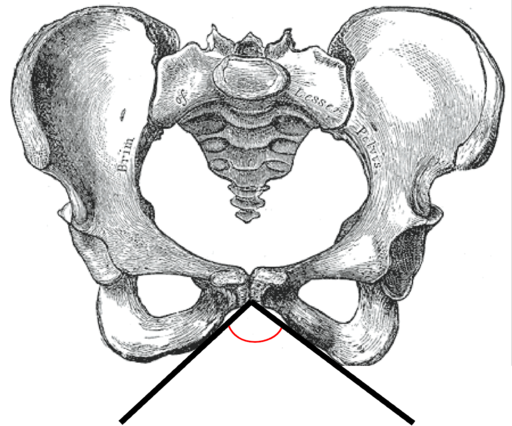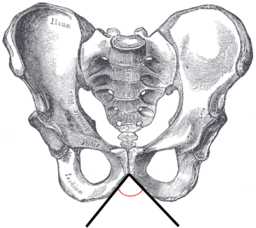READ: Forensic Anthropology
Determining Sex, Race, and Height
Sex
Once a person has gone through puberty, the sex of a skeleton can often be determined by looking at the shape of the pelvis and the size of the skull. There are several small differences in the shape and angle of the bones in a male and female pelvis. The main difference is that a female pelvis is wider and has a larger opening. This is due to the fact that a woman's pelvis must allow for the passage of an infant during childbirth. A male pelvis is typically more narrow. This can be seen most readily by measuring the subpubic angle. The subpubic angle in a female pelvis is greater than 90 degrees. In a male pelvis the angle is less than 90 degrees.
Female Pelvis:

Male Pelvis:

The skull can also provide clues about the sex of a skeleton. A male skull is typically larger and has a more pronounced brow line. Female skulls tend to be smaller.
Race
There is some controversy surrounding the ability of anthropologists to determine a person’s race based on the skeleton. This is mainly due to the fact that most people have mixed ancestry. Anthropologists typically look at the features of the skull in order to get an idea of race. In general there are three main classes of skulls: Negroid, Mongoloid, and Caucasoid. Negroid skulls are associated with people of African descent, mongoloid skulls are associated with people of Asian descent, and caucasoid skulls are associated with people of European descent.
The main differences in the skull are in the shapes of the eye orbits, the shape of the nasal cavities, and the shape of the jaw. By looking at these characteristics, anthropologists can get an idea of the person’s race, but it is important to understand that this process may not always be accurate, especially since many people have mixed ancestry.
Height
The height of a person can be estimated by measuring the long bones of a skeleton. The measurements can be compared to known measurements in order to estimate the height. The estimation is more accurate when the sex and the race are known.